A spinal fusion surgery treatment called transforaminal lumbar interbody fusion (TLIF) is used to stabilize the spinal vertebrae and the disc, or shock absorber, that sits in between them. The purpose of this operation is to reduce nerve irritation and pain. In cases of recurrent disc herniation, degenerative disc disease, and spondylolisthesis, it is frequently advised. TLIF surgery can be performed via a minimally invasive technique or a conventional open incision, depending on the patient's condition.
| Country | Cost | Local_currency |
|---|---|---|
| United Kingdom | USD 4724 - 16061 | 3732 - 12688 |
| Turkey | USD 10000 - 16000 | 301400 - 482240 |
| Spain | USD 14000 | 12880 |
| United States | USD 5566 - 15665 | 5566 - 15665 |
| Singapore | USD 6099 - 20414 | 8173 - 27355 |
Treatment cost
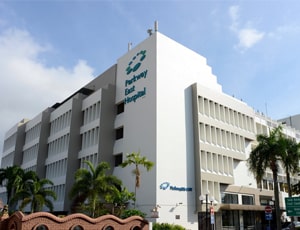
Parkway East Hospital located in Joo Chiat Pl, Singapore is accredited by JCI. Also listed below are some of the most prominent infrastructural details:
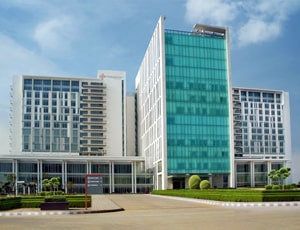
Types of TLIF in Medanta - The Medicity and its associated cost
| Treatment Option | Approximate Cost Range (USD) | Approximate Cost Range (INR) |
|---|---|---|
| TLIF with Pedicle Screws | 6709 - 13216 | 556449 - 1119542 |
| TLIF with Cages | 6099 - 12414 | 509767 - 1009755 |
| TLIF with Bone Grafts | 5578 - 11315 | 470917 - 903866 |
| Minimally Invasive TLIF | 7316 - 13260 | 603629 - 1106192 |
| TLIF with Fusion | 7797 - 14903 | 646948 - 1222732 |
| Revision TLIF | 8591 - 15767 | 681852 - 1289323 |
DOCTORS IN 14 SPECIALITIES
FACILITIES & AMENITIES
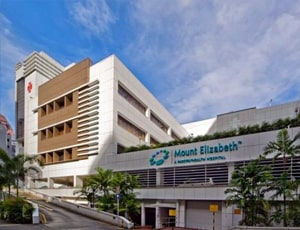
Mount Elizabeth Hospital located in Singapore, Singapore is accredited by JCI. Also listed below are some of the most prominent infrastructural details:

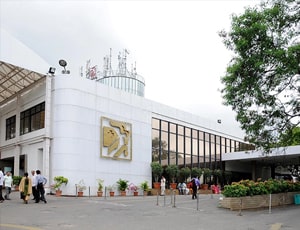
Types of TLIF in Apollo Hospitals and its associated cost
| Treatment Option | Approximate Cost Range (USD) | Approximate Cost Range (INR) |
|---|---|---|
| TLIF with Pedicle Screws | 6791 - 13660 | 561086 - 1088645 |
| TLIF with Cages | 6179 - 12554 | 506410 - 1020866 |
| TLIF with Bone Grafts | 5724 - 11070 | 455584 - 930733 |
| Minimally Invasive TLIF | 7311 - 13568 | 606411 - 1087566 |
| TLIF with Fusion | 7903 - 14410 | 645045 - 1211664 |
| Revision TLIF | 8591 - 16061 | 701197 - 1305282 |
DOCTORS IN 14 SPECIALITIES
FACILITIES & AMENITIES
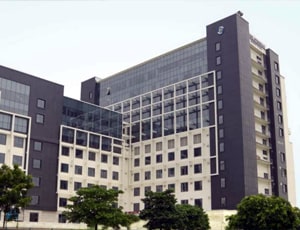
Types of TLIF in Venkateshwar Hospital and its associated cost
| Treatment Option | Approximate Cost Range (USD) | Approximate Cost Range (INR) |
|---|---|---|
| TLIF with Pedicle Screws | 6095 - 12125 | 498792 - 1000740 |
| TLIF with Cages | 5558 - 11112 | 457020 - 919691 |
| TLIF with Bone Grafts | 5088 - 10187 | 415956 - 833540 |
| Minimally Invasive TLIF | 6582 - 12127 | 542051 - 994649 |
| TLIF with Fusion | 7090 - 13175 | 583543 - 1081482 |
| Revision TLIF | 7582 - 14142 | 626406 - 1169669 |
DOCTORS IN 13 SPECIALITIES
FACILITIES & AMENITIES
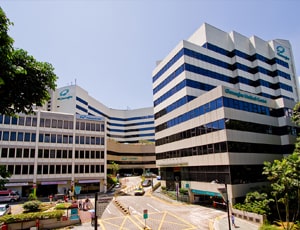
Gleneagles Hospital located in Napier Road, Singapore is accredited by JCI. Also listed below are some of the most prominent infrastructural details:
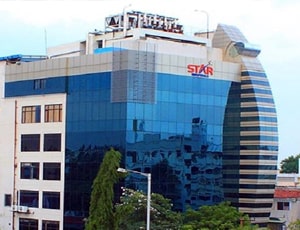
Types of TLIF in Star Hospitals and its associated cost
| Treatment Option | Approximate Cost Range (USD) | Approximate Cost Range (INR) |
|---|---|---|
| TLIF with Pedicle Screws | 5554 - 11100 | 460471 - 924775 |
| TLIF with Cages | 5142 - 10170 | 421706 - 846277 |
| TLIF with Bone Grafts | 4691 - 9314 | 383712 - 774771 |
| Minimally Invasive TLIF | 6035 - 11257 | 493062 - 915003 |
| TLIF with Fusion | 6596 - 12141 | 541508 - 1011309 |
| Revision TLIF | 7058 - 13056 | 578996 - 1078365 |
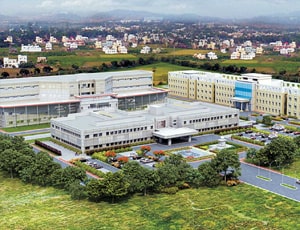
Types of TLIF in Global Health City and its associated cost
| Treatment Option | Approximate Cost Range (USD) | Approximate Cost Range (INR) |
|---|---|---|
| TLIF with Pedicle Screws | 6651 - 13487 | 558959 - 1082786 |
| TLIF with Cages | 6054 - 12359 | 498201 - 996304 |
| TLIF with Bone Grafts | 5584 - 11094 | 461407 - 922409 |
| Minimally Invasive TLIF | 7401 - 13763 | 594294 - 1111152 |
| TLIF with Fusion | 7776 - 14537 | 651189 - 1218320 |
| Revision TLIF | 8408 - 16008 | 695027 - 1277433 |
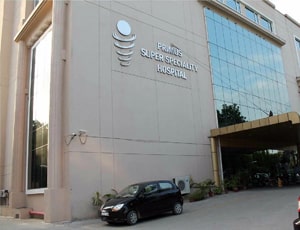
Types of TLIF in Primus Super Speciality Hospital and its associated cost
| Treatment Option | Approximate Cost Range (USD) | Approximate Cost Range (INR) |
|---|---|---|
| TLIF with Pedicle Screws | 6083 - 12189 | 497832 - 997624 |
| TLIF with Cages | 5598 - 11212 | 456007 - 915392 |
| TLIF with Bone Grafts | 5074 - 10133 | 415247 - 830917 |
| Minimally Invasive TLIF | 6578 - 12161 | 542530 - 994716 |
| TLIF with Fusion | 7082 - 13235 | 585178 - 1082851 |
| Revision TLIF | 7643 - 14161 | 627064 - 1168166 |
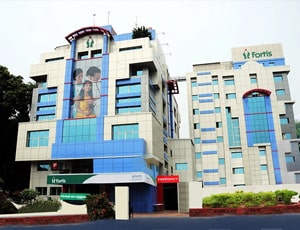
Types of TLIF in Fortis Malar Hospital and its associated cost
| Treatment Option | Approximate Cost Range (USD) | Approximate Cost Range (INR) |
|---|---|---|
| TLIF with Pedicle Screws | 6111 - 12143 | 499794 - 998709 |
| TLIF with Cages | 5571 - 11192 | 459288 - 917918 |
| TLIF with Bone Grafts | 5095 - 10123 | 416332 - 830535 |
| Minimally Invasive TLIF | 6573 - 12213 | 543340 - 997988 |
| TLIF with Fusion | 7097 - 13167 | 581663 - 1079890 |
| Revision TLIF | 7610 - 14242 | 627022 - 1163861 |
DOCTORS IN 9 SPECIALITIES
FACILITIES & AMENITIES
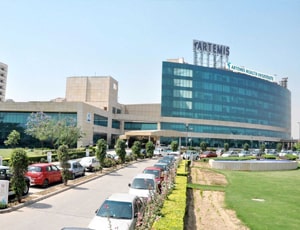
Types of TLIF in Artemis Health Institute and its associated cost
| Treatment Option | Approximate Cost Range (USD) | Approximate Cost Range (INR) |
|---|---|---|
| TLIF with Pedicle Screws | 6896 - 13354 | 560912 - 1116303 |
| TLIF with Cages | 6097 - 12228 | 511000 - 1032384 |
| TLIF with Bone Grafts | 5566 - 11254 | 459708 - 905524 |
| Minimally Invasive TLIF | 7184 - 13598 | 604786 - 1099414 |
| TLIF with Fusion | 7700 - 14690 | 634039 - 1200780 |
| Revision TLIF | 8516 - 15665 | 691810 - 1278760 |
DOCTORS IN 15 SPECIALITIES
FACILITIES & AMENITIES
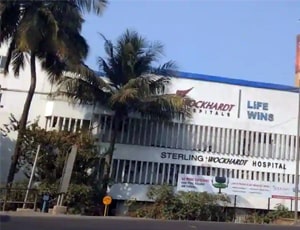
Types of TLIF in Sterling Wockhardt Hospital and its associated cost
| Treatment Option | Approximate Cost Range (USD) | Approximate Cost Range (INR) |
|---|---|---|
| TLIF with Pedicle Screws | 6108 - 12234 | 501800 - 998940 |
| TLIF with Cages | 5590 - 11208 | 459292 - 917389 |
| TLIF with Bone Grafts | 5060 - 10121 | 417284 - 835241 |
| Minimally Invasive TLIF | 6568 - 12149 | 542557 - 994404 |
| TLIF with Fusion | 7104 - 13203 | 584794 - 1076660 |
| Revision TLIF | 7614 - 14141 | 624036 - 1161020 |

Types of TLIF in Medicana International Istanbul and its associated cost
| Treatment Option | Approximate Cost Range (USD) | Approximate Cost Range (TRY) |
|---|---|---|
| TLIF (Overall) | 6888 - 16510 | 203683 - 508329 |
| TLIF with Pedicle Screws | 7178 - 15971 | 222410 - 478482 |
| TLIF with Cages | 6617 - 14436 | 207784 - 436192 |
| TLIF with Bone Grafts | 6246 - 13689 | 183792 - 414941 |
| Minimally Invasive TLIF | 7189 - 16962 | 224781 - 518398 |
| TLIF with Fusion | 7719 - 18001 | 238327 - 554028 |
| Revision TLIF | 8540 - 19361 | 250249 - 578298 |
DOCTORS IN 10 SPECIALITIES
FACILITIES & AMENITIES
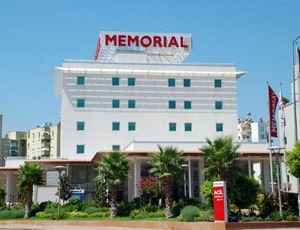
Types of TLIF in Memorial Antalya Hospital and its associated cost
| Treatment Option | Approximate Cost Range (USD) | Approximate Cost Range (TRY) |
|---|---|---|
| TLIF (Overall) | 6674 - 16790 | 202423 - 518218 |
| TLIF with Pedicle Screws | 7390 - 15551 | 225141 - 470186 |
| TLIF with Cages | 6838 - 14576 | 204568 - 443055 |
| TLIF with Bone Grafts | 6078 - 13431 | 184398 - 410742 |
| Minimally Invasive TLIF | 7280 - 16933 | 217996 - 518301 |
| TLIF with Fusion | 7819 - 18184 | 239168 - 533912 |
| Revision TLIF | 8338 - 19060 | 256972 - 566341 |
DOCTORS IN 11 SPECIALITIES
FACILITIES & AMENITIES
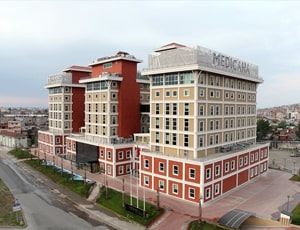
Types of TLIF in Medicana International Samsun Hospital and its associated cost
| Treatment Option | Approximate Cost Range (USD) | Approximate Cost Range (TRY) |
|---|---|---|
| TLIF (Overall) | 6897 - 16959 | 200083 - 517470 |
| TLIF with Pedicle Screws | 7214 - 15436 | 215689 - 471820 |
| TLIF with Cages | 6829 - 14612 | 207780 - 447584 |
| TLIF with Bone Grafts | 6311 - 13298 | 187026 - 401657 |
| Minimally Invasive TLIF | 7222 - 16989 | 224686 - 505189 |
| TLIF with Fusion | 7905 - 18246 | 241760 - 549702 |
| Revision TLIF | 8379 - 19435 | 250887 - 576136 |
DOCTORS IN 11 SPECIALITIES
FACILITIES & AMENITIES
Spinal fusion is a type of a back surgery procedure for joining two or more bones permanently in the spine to prevent movement between them. The bones that are joined are called as vertebrae.
Spinal fusion is performed along with other surgical procedures such as foraminotomy or laminectomy and after discectomy in the neck. Spinal fusion is required if the patient has injury or fractures of the spine bones. The spine will become weak due to infection or tumors. Spinal fusion is also performed in abnormal curvatures that result from scoliosis or kyphosis.
Pain medications will be given either by mouth or through an intravenous line. You will be taught how to stand properly, walk, sit and stand. You will not be able to eat for two to three days. Nutrients will be given through an intravenous route. You have to wear a bracelet after leaving the hospital. The surgeon will provide instructions to the patient regarding home care after surgery.
It alleviates nerve pain by creating more space around the spinal cord and nerve roots. Disk fusion surgery reduces post-decompressive deformity. The spine fusion surgery corrects any deformity which is present before surgery. The surgery ensures normal alignment of the spine. Laser spine institute can perform spinal fusion surgery in minimally invasive manner.
Sometimes disk fusion surgery may lead to more back pain and prolongs the recovery time. Inflammation and scaring is also possible after the surgery. Due to nerve irritation, pain or weakness can also occur. The fused segment may also cause stress near the fusion.
The risks of disk fusion surgery include the following:
Ask your healthcare adviser for the best multiple options and choose the one that meets your expectations